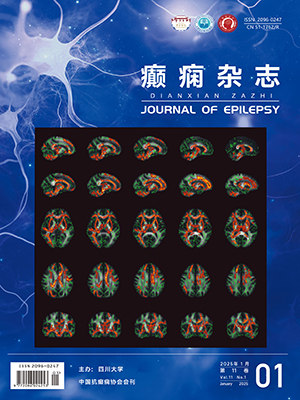| 1. |
Bignone PA, Baines AJ. Spectrin alpha II and beta II isoforms interact with high affinity at the tetramerization site. Biochem J, 2003 , 374 (Pt 3): 613-24.
|
| 2. |
Nakano M, Nogami S, Sato S, et al. Interaction of syntaxin with alpha-fodrin, a major component of the submembranous cytoskeleton. Biochem Biophys Res Commun, 2001, 288(2): 468-75.
|
| 3. |
Dryżałowski P, Jóźwiak S, Franckiewicz M, et al. Benign epilepsy with centrotemporal spikes - current concepts of diagnosis and treatment. Neurol Neurochir Pol, 2018, 52(6): 677-689.
|
| 4. |
Jabbari K, Bobbili DR, Lal D, et al. Rare gene deletions in genetic generalized and Rolandic epilepsies. PLoS One, 2018, 13(8): e0202022.
|
| 5. |
Terrone G, Pinelli M, Bernardo P, et al. Intrafamilial variability in SPTAN1-related disorder: from benign convulsions with mild gastroenteritis to developmental encephalopathy. Eur J Paediatr Neurol, 2020, 28: 237-239.
|
| 6. |
Wirrell EC. Benign epilepsy of childhood with centrotemporal spikes. Epilepsia, 1998, 39(Suppl 4): 32-41.
|
| 7. |
Parisi P, Matricardi S, Tozzi E, et al. Benign epilepsy of childhood with centro-temporal spikes (BECTS) versus migraine: a neuropsychological assessment. Childs Nerv Syst, 2012, 28(12): 2129-35.
|
| 8. |
Eom S, Lee MK, Park JH, et al. The impact of an exercise therapy on psychosocial health of children with benign epilepsy: a pilot study. Epilepsy Behav, 2014, 37: 151-156.
|
| 9. |
Yan X, Yu Q, Gao Y, et al. Cognition in patients with benign epilepsy with centrotemporal spikes: a study with long-term VEEG and RS-fMRI. Epilepsy Behav, 2017, 76: 120-125.
|
| 10. |
Samaitienė R, Norkūnienė J, Tumienė B, et al. Sleep and behavioral problems in rolandic epilepsy. Pediatr Neurol, 2013, 48(2): 115-22.
|
| 11. |
Dong H-L, Chen L, Wu Z-Y. A novel de novo SPTAN1 nonsense variant causes hereditary motor neuropathy in a Chinese family. Brain, 2021, 144(1): e11-e11.
|
| 12. |
Tohyama J, Akasaka N, Osaka H, et al. Early onset West syndrome with cerebral hypomyelination and reduced cerebral white matter. Brain and Development, 2008, 30(5): 349-355.
|
| 13. |
Saitsu H, Tohyama J, Kumada T, et al. Dominant-negative mutations in α-II spectrin cause West syndrome with severe cerebral hypomyelination, spastic quadriplegia, and developmental delay. The American Journal of Human Genetics, 2010, 86(6): 881-891.
|
| 14. |
Hamdan FF, Saitsu H, Nishiyama K, et al. Identification of a novel in-frame de novo mutation in SPTAN1 in intellectual disability and pontocerebellar atrophy. European Journal of Human Genetics, 2012, 20(7): 796-800.
|
| 15. |
Syrbe S, Harms FL, Parrini E, et al. Delineating SPTAN1 associated phenotypes: from isolated epilepsy to encephalopathy with progressive brain atrophy. Brain, 2017, 140(9): 2322-2336.
|
| 16. |
Morsy H, Benkirane M, Cali E, et al. Expanding SPTAN1 monoallelic variant associated disorders: from epileptic encephalopathy to pure spastic paraplegia and ataxia. Genet Med, 2023, 25(1): 76-89.
|
| 17. |
Beijer D, Deconinck T, De Bleecker JL, et al. Nonsense mutations in alpha-II spectrin in three families with juvenile onset hereditary motor neuropathy. Brain, 2019, 142(9): 2605-2616.
|
| 18. |
Van de Vondel L, De Winter J, Beijer D, et al. De novo and dominantly inherited SPTAN1 mutations cause spastic paraplegia and cerebellar ataxia. Movement disorders, 2022, 37(6): 1175-1186.
|
| 19. |
Gartner V, Markello TC, Macnamara E, et al. Novel variants in SPTAN1 without epilepsy: an expansion of the phenotype. Am J Med Genet A, 2018, 176(12): 2768-2776.
|




